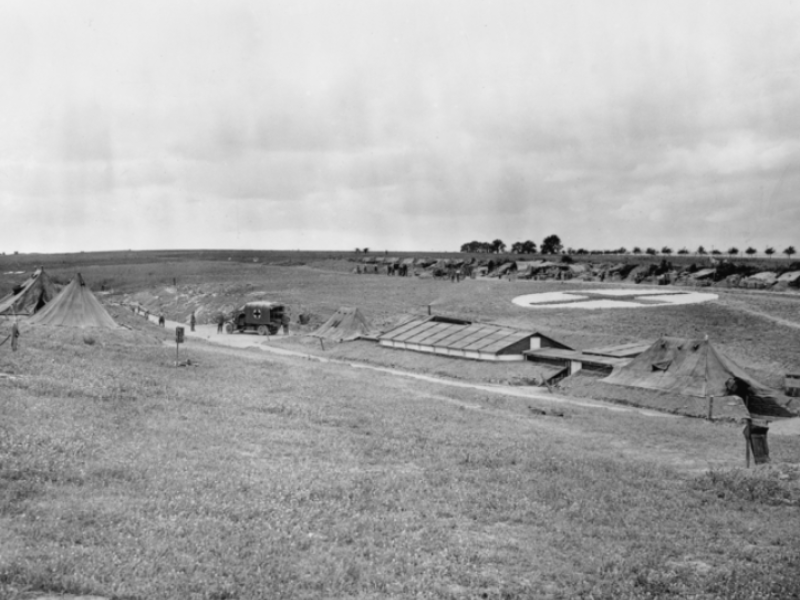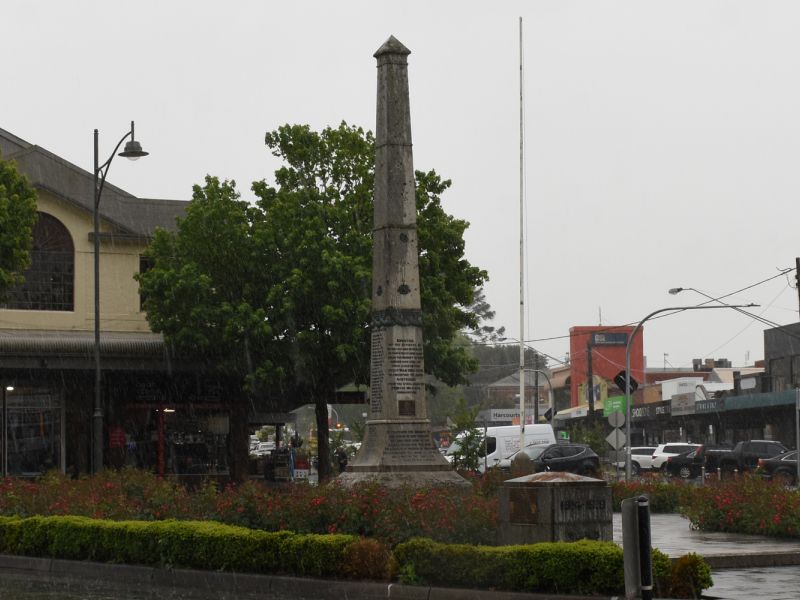Private William Keating, 14th Field Ambulance, AIF
“Will” Keating was born in 1890 to John and Ellen Cross near the town of Darnum, Victoria. He attended Catholic School in Warragul, worked as a farming assistant and served for 18 months in the Citizens Military Forces. He was of medium height and build, with reddish hair and blue eyes, and he later played football with his unit.
Keating enlisted into the Australian Imperial Force at Warragul on 15 April 1915, and undertook his training at the military camp at Broadmeadows near Melbourne. He trained as a stretcher bearer and sailed for Egypt with a reinforcement group for the 6th Field Ambulance seven months later.
The Gallipoli campaign had all but ended by then, so Keating was transferred to the newly-raised 14th Field Ambulance, which sailed for France in June 1916.
Less than two weeks after arriving in France, the 14th Field Ambulance, as part of the 5th Australian Division, fought in a costly and unsuccessful attack at Fromelles on the night of 19 July 1916.
In less than 24 hours, the Australians suffered 5,533 casualties.
Throughout the fighting and afterwards, stretcher bearers from the 14th Field Ambulance carried hundreds of wounded men between the Le Trou Aid Post behind the Australian front line and an ambulance loading post further to the rear.
William was described during this time as being “reticent about himself … [but] responsible for many brave deeds… [and] received great praise from his chief”.
Despite severe losses, the 5th Division remained in Fromelles. Several weeks later, Keating was admitted to hospital suffering from a serious case of appendicitis and transported to England to recover.
He did not return to the front until June 1917, when the focus of British operations shifted north into Belgium in preparation for a major offensive that would later be known as the Third Battle of Ypres. Australian troops were involved in a number of attacks that began with the battle of Menin Road on 20 September 1917.
Stretcher bearers from the 14th Field Ambulance were attached to the 1st and 2nd Division medical services to support casualties incurred during the fighting.
On 21 September 1917, Keating was carrying wounded men along the Menin Road between Hooge Crater and Hellfire Corner when Australian stretcher bearers came under German shell-fire.
Keating was hit in the back by fragments from a high-explosive shell, killing him instantly. He was 26 years old.
He was buried at the Menin Road South Military Cemetery near Ypres. A simple epitaph by his grieving parents appears on his headstone today: “In Loving Memory, R.I.P.”
Keating’s family received a letter from him two days after receiving news of his death. His sister Ellen devoted great energy, describing herself as “very anxious”, about tracking down her brother’s possessions, finding information regarding the nature of his wounds and a photograph of his grave.
David Sutton, Historian, Military History Section
Image: The Dressing Station of the 14th Field Ambulance near Franvillers. France, 1918
- Australian War Memorial https://www.awm.gov.au/collection/C2647642

 Australian War Memorial
Australian War Memorial